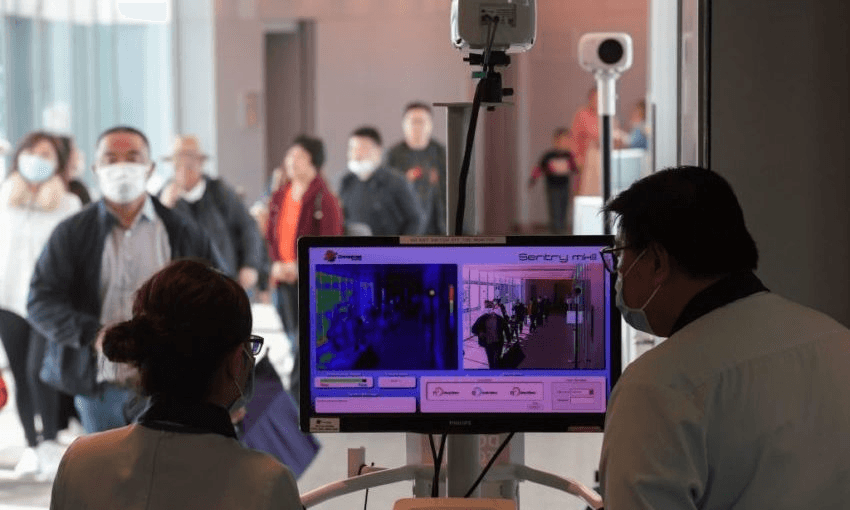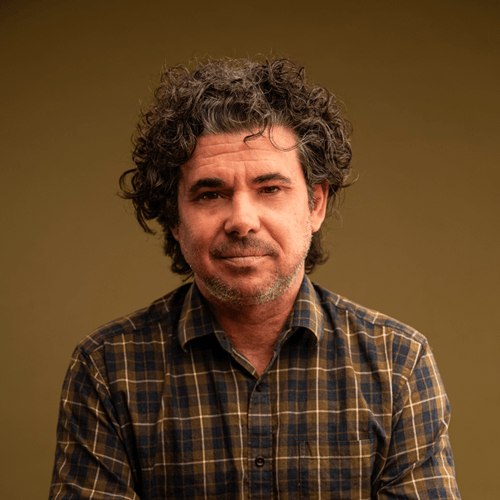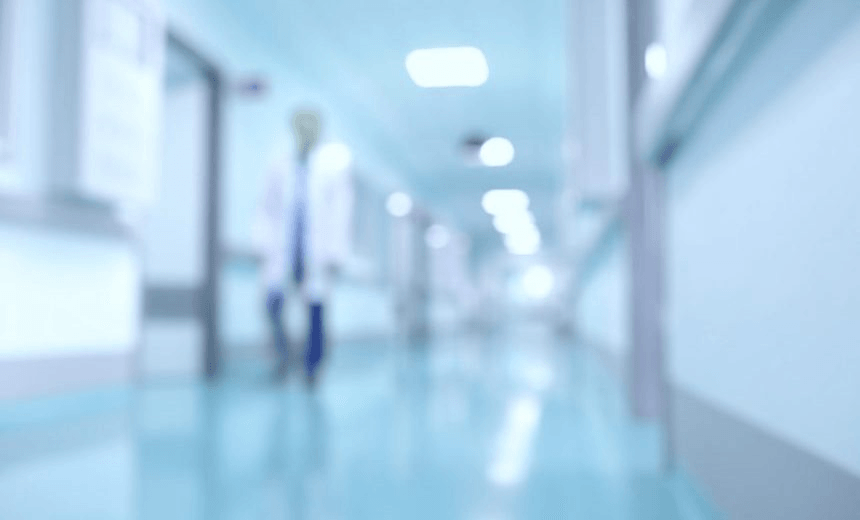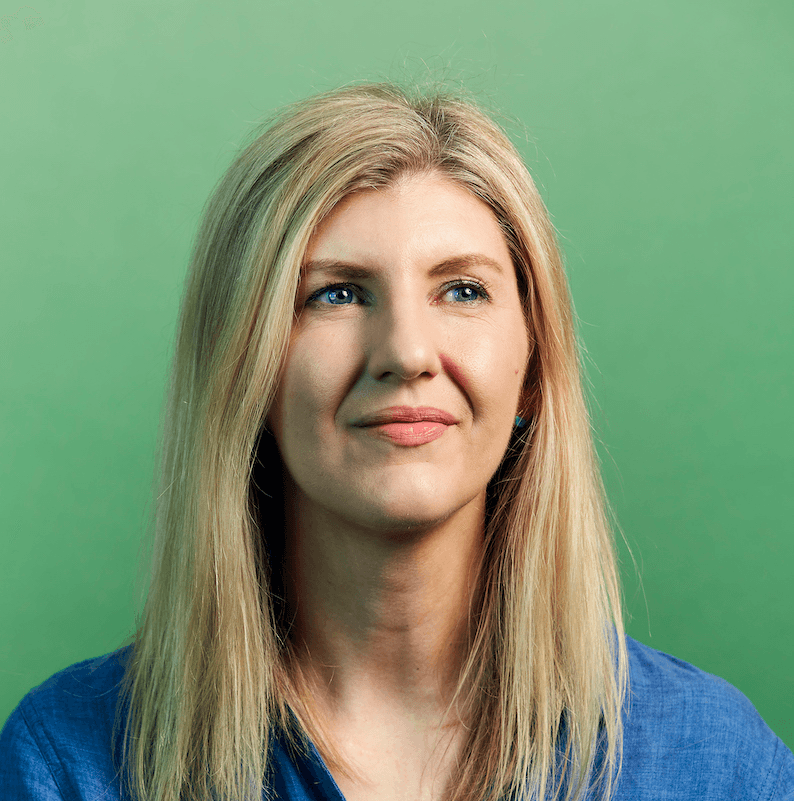Passengers arriving from China are not having their temperatures checked at the border, as in some countries. Here the Ministry of Health explains their rationale.
While temperature checks have become commonplace across countries such as China and South Korea – together responsible for the vast majority of the almost 110,000 cases reported worldwide – New Zealand citizens arriving home from the most affected countries are not having their temperature taken unless they say they’ve been feeling unwell, or staff detect visible signs of ill health.
Last week, Jacinda Ardern said an “aggressive approach” was being undertaken at airports, but one New Zealand citizen who arrived at Auckland International Airport yesterday after travelling from Beijing with a stopover in Seoul, was surprised there was not a stricter process.
The woman, who is now self-isolated and has no symptoms or illness, said that when she filled out a form detailing her travel she was “directed to a desk where they had coronavirus information in Mandarin, Cantonese, Korean and English. Then they directed me to a counter where I had to fill in a form, where I had to state that I had not been unwell. But then I just had to post the form into a bin, no one checked that I’d actually filled out all the details.”
She said: “No one was taking temperatures. I didn’t see any thermal cameras. At the final stage, where I filled in the form and posted it in the bin, they said, ‘you know you have to self isolate?’ But that was it. No guidance on what that meant.
“Frontline health people were not wearing masks. They were wiping the pens after use but that was it.
“In China and Korea there are people with no-contact thermometers everywhere. Airports, hotels, stores. They point them at your forehead or arm and get an instant reading.”
Under current travel restrictions, foreign nationals who have been in mainland China or Iran are banned from entering New Zealand. New Zealand citizens and permanent residents are requested to undertake 14 days self-isolation, as are all arrivals from Iran and northern Italy.
Responding to questions from The Spinoff, a spokesperson for the Ministry of Health stressed that information on Covid-19, symptoms, Healthline and the importance of self-isolation was distributed on cards provided on all incoming flights. “We have also asked airlines to make in-flight announcements to passengers to explain why the cards are being provided, at the same time the passenger arrival card information is announced.”
Health staff were active at Christchurch and Auckland international arrivals, he said. “Staff have been taking the temperatures of anyone who is feeling unwell and anyone with a temperature higher than 38 degrees Celsius will be referred for appropriate assessment. However, it’s important to stress that temperature checking for all passengers has in the past been found be ineffective as the incubation period for COVID-19 is up to 14 days.”
The World Health Organisation advice, said the spokesperson, was that “screening and quarantining entering travellers at international borders did not substantially delay introduction of the disease in past pandemics, except in some island countries”. As such the current public health response was “focused principally at national and community levels rather than international borders”.
The spokesperson added: “We still think, however, that the chances of a sustained community outbreak are low-moderate. We’re taking this very seriously and keeping individuals, families and our communities safe and healthy in the current global environment requires a team effort and that’s what we’re seeing across New Zealand.”
In comments on TVNZ Breakfast, Ardern pointed out that New Zealand’s border approach was stricter than in many countries. “It’s much more than you’ve seen in other places, and it is an aggressive approach.”
This is true. In Britain, for example, where the Covid-19 response has come in for continued domestic criticism, there is no restriction on foreign nationals arriving from China. Several countries are ramping up their border protections, however. Overnight Israel, for example, decreed that anyone entering arriving in the country from anywhere in the world need to isolate for 14 days.
The minister of health, David Clark, told TVNZ that those with a high temperature were “easy to spot”.
He said: “If somebody has Covid-19 in active phase, they’ve got a fever of 38, they can hardly walk. They’re easy to spot … If, for example, though the person is in the early phases, they don’t have any symptoms. They’re going to look just like you and I. Anybody could be in that position.”
On Q+A on Sunday, Clark added, “What we know about the virus itself is it’s typically associated with high fever. And those people don’t look well. We have medical experts at the borders looking out for people who don’t look well. But we also know that people are not being allowed on to flights from those hot spots if they are unwell.”
China, South Korea, Italy and Iran between them account for 93% of the almost 110,000 reported cases across 100 countries, according to a World Health Organisation briefing this morning.
Director-general Tedros Adhanom Ghebreyesus said that the outbreak was getting close to being classifiable as a global pandemic.
“Now that the virus has a foothold in so many countries, the threat of a pandemic has become very real,” he said. “But it would be the first pandemic in history that could be controlled. The bottom line is we are not at the mercy of the virus.”
Irrespective of its status, he said, “the rule of the game is the same – never give up.”
He noted that China and South Korea were both witnessing a decline in new cases, while Italy had dramatically increased measures, all but banning travel from the northern part of the country. “We are encouraged that Italy is taking aggressive measures to contain its epidemic and we hope that those measures prove effective in the coming days.”
The New Zealand government announced yesterday new powers to quarantine arriving ships or planes.
As of yesterday, 274 tests for Covid-19 had been completed in New Zealand, with five positive results. There are two further cases deemed “probable”. To date there has been no detected community transmission, with the only local transmission within family households.
The Ministry of Health has announced a scaling up of testing ability, with an Auckland laboratory this week to increase capacity from 60 tests a day to as many as 750.




